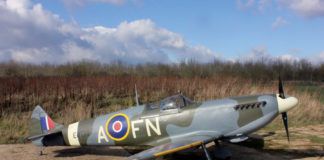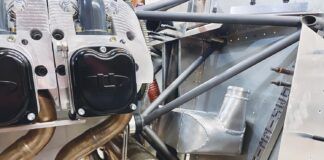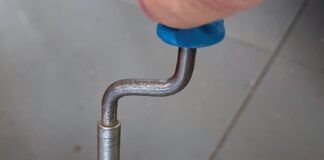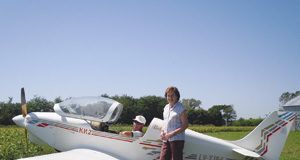Oil Filter Drain Tool
Where can I buy the oil filter drain tool that was mentioned by Dave Prizio in “Maintenance Matters: Changing Your Oil” in the March 2014 issue?
–Sammy Dance
Dave Prizio responds: The oil filter drain tool can be purchased from Aircraft Spruce & Specialty. Ask for part #13-03147, Model 7300 Oil Drainer. In the current catalog the cost is $114.50.
Clamps
My question is in reference to “To Bead or Not to Bead?” in the April 2014 issue. At AirVenture I purchased a wire clamping tool called ClampTite (www.clamptool.com). Have you tried these? Would you trust these clamps for aircraft use?
–Marc R. Beauvais
Dan Horton answers: There are two issues regarding wire loops as hose clamps per the tool illustrations:
First, extrusion could be a problem, and it would vary a lot depending on the number of loops, the tightness of the loops, and the hose material. The primary design feature of the ClampTite tool appears to be the ability to pull the wire very tight. I’m not so sure it’s a good idea.
Second, a single hook-style bend to secure the ends probably would not be acceptable to most A&Ps. The standard rule for safety wire is six twists.
That said, clamping a hose with a wire loop has long been common practice within the ultralight community, where saving weight is always of interest. I’ve never seen a problem with a sensible application, for example, two loops with a six-twist tail to secure vacuum or very low pressure lines on beaded tubes. Note that this sort of application doesn’t require long-term, stable clamp pressure, so some extrusion over time won’t hurt anything.
I’m not aware of a Mil-Spec or other official guidance on this subject.
Static Wicks
How critical is it for us little guys, who may spend a couple of hours in the air, to have a static wick and all surfaces connected? [Aero ‘lectrics, April 2014]
–Ray Toews
Jim Weir responds: Static wicks and bonded surfaces are only critical for those who are having trouble with spit-sizzle statics in the radios. Other than that, all they add is ballast to the airframe.
Brake Fluid
The Maintenance Matters article on brakes, April 2014, was very informative, but overlooked an important point about brake fluid. At least one manufacturer of brakes for Experimental aircraft specifies the use of automotive automatic transmission fluid instead of brake fluid. Keep up the great work. I love the stories and articles thoroughly.
–Ray Henrie
You are correct—there are a number of different brake fluids in use on various aircraft—from traditional Mil-Spec 5606, to DOT4 (used in cars), to Automatic Transmission Fluid (ATF). All will work. However, in our experience, the most important thing is materials compatibility, so check with your brake system component manufacturer on their recommendations—Ed.




